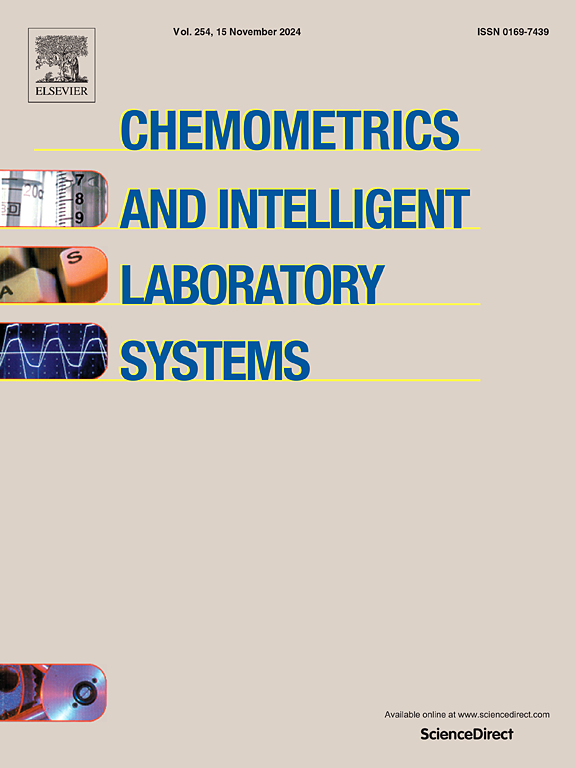Not from scratch: Explainable deep transfer learning fine-tunning with domain adaptation enables trustworthy COVID-19 prediction
IF 3.8
2区 化学
Q2 AUTOMATION & CONTROL SYSTEMS
Chemometrics and Intelligent Laboratory Systems
Pub Date : 2025-08-28
DOI:10.1016/j.chemolab.2025.105517
引用次数: 0
Abstract
Medical image analysis can help diagnose Coronavirus Disease 2019 (COVID-19) early and save patient lives before the disease worsens. However, there are various limitations to manual inspection of these medical images, such as dependence on physician experience and subjectivity of assessment. To enable fast and precise disease diagnosis, we propose XDTLMI-Net, a framework using four CNNs (GoogLeNet, ResNet18, ResNet50, ResNet101) skilled in image data processing. This framework uses existing medical domain knowledge to guide transfer learning for COVID-19 Computed tomography (CT) scan images and Chest X-rays (CXR) images. XDTLMI-Net performed three tasks of medical image classification of COVID-19 on three public datasets: COVID-19 CT, SARS-COV-2 CT and COVID-19 CXR. It achieved an average classification accuracy of 0.9897, 0.9752 and 0.9397, and an average classification F1-score of 0.9 guide transfer learning with 898, 0.9741 and 0.9394, respectively. Moreover, we employed the Shaply Additive exPlanations and Gradient-weighted Class Activation Mapping to interpret the COVID-19 predictions and help understand the predictive models’ decision-making process. Generally, a general end-to-end framework called XDTLMI-Net based on CNN and transfer learning was developed, which works on small datasets of medical images, and does not require any segmentation or image preprocessing procedures. Moreover, XDTLMI-Net outperformed on three datasets in fine-tuning course and gave reasonable importance to each input COVID-19 image, showing its potential for application in different clinical scenarios.
不是从零开始:可解释的深度迁移学习微调与领域自适应可以实现可信的COVID-19预测
医学图像分析可以帮助早期诊断2019冠状病毒病(COVID-19),并在疾病恶化之前挽救患者的生命。然而,人工检查这些医学图像有各种局限性,如对医生经验的依赖和评估的主观性。为了实现快速准确的疾病诊断,我们提出了XDTLMI-Net框架,该框架使用了四个cnn (GoogLeNet, ResNet18, ResNet50, ResNet101)熟练的图像数据处理。该框架使用现有的医学领域知识来指导COVID-19计算机断层扫描(CT)图像和胸部x射线(CXR)图像的迁移学习。XDTLMI-Net在COVID-19 CT、SARS-COV-2 CT和COVID-19 CXR三个公共数据集上完成了COVID-19医学图像分类的三项任务。其平均分类准确率分别为0.9897、0.9752和0.9397,指导迁移学习的平均分类f1得分为0.9,分别为898、0.9741和0.9394。此外,我们采用Shaply加性解释和梯度加权类激活映射来解释COVID-19预测,并帮助理解预测模型的决策过程。一般来说,基于CNN和迁移学习开发了一个通用的端到端框架XDTLMI-Net,它适用于医学图像的小数据集,不需要任何分割和图像预处理程序。此外,XDTLMI-Net在三个数据集的微调过程中表现优异,并对每个输入的COVID-19图像给予合理的重视,显示了其在不同临床场景中的应用潜力。
本文章由计算机程序翻译,如有差异,请以英文原文为准。
求助全文
约1分钟内获得全文
求助全文
来源期刊
CiteScore
7.50
自引率
7.70%
发文量
169
审稿时长
3.4 months
期刊介绍:
Chemometrics and Intelligent Laboratory Systems publishes original research papers, short communications, reviews, tutorials and Original Software Publications reporting on development of novel statistical, mathematical, or computer techniques in Chemistry and related disciplines.
Chemometrics is the chemical discipline that uses mathematical and statistical methods to design or select optimal procedures and experiments, and to provide maximum chemical information by analysing chemical data.
The journal deals with the following topics:
1) Development of new statistical, mathematical and chemometrical methods for Chemistry and related fields (Environmental Chemistry, Biochemistry, Toxicology, System Biology, -Omics, etc.)
2) Novel applications of chemometrics to all branches of Chemistry and related fields (typical domains of interest are: process data analysis, experimental design, data mining, signal processing, supervised modelling, decision making, robust statistics, mixture analysis, multivariate calibration etc.) Routine applications of established chemometrical techniques will not be considered.
3) Development of new software that provides novel tools or truly advances the use of chemometrical methods.
4) Well characterized data sets to test performance for the new methods and software.
The journal complies with International Committee of Medical Journal Editors'' Uniform requirements for manuscripts.

 求助内容:
求助内容: 应助结果提醒方式:
应助结果提醒方式:


